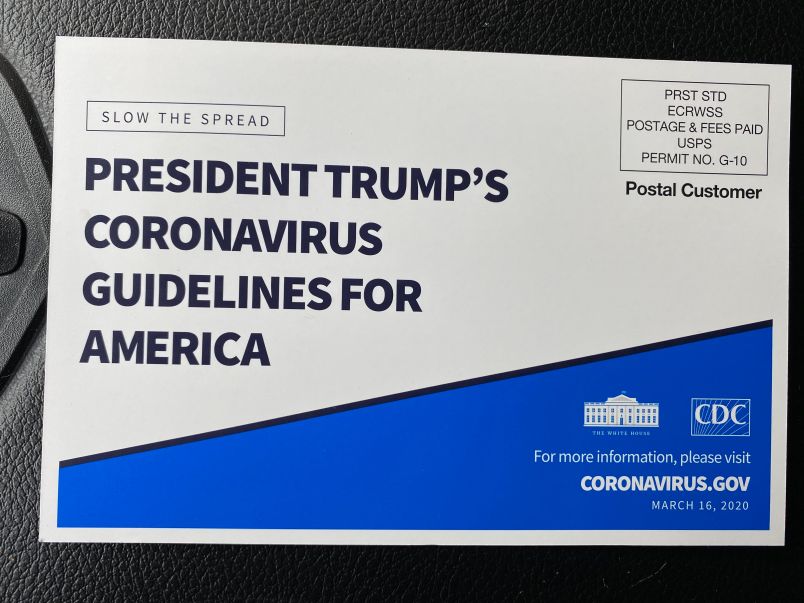When Todd Lando, a resident of Marin County, California, opened his P.O. box Monday morning, one piece of mail struck him immediately.
It was a blue and white mailer titled: “President Trump’s Coronavirus Guidelines for America.”
Below the title, logos for the White House and Centers for Disease Control sit side by side.
“I was shocked to see it,” Lando, a wildfire and vegetation management specialist, told TPM. “The messaging is important of course, but they wasted a lot of space on who it’s from.”
White House Deputy Press Secretary Judd Deere confirmed that the mailer is an official White House/CDC document. “It’s the president’s 15-day guidelines to stop the spread,” he told TPM in an email.
Judd added that the mailers were disseminated “nationwide.”
The contents are in line with what experts have been saying for weeks: work from home when possible, wash your hands, avoid gatherings.
But the choice to slap the President’s name on the guidelines is notable, given the stark polarization in people’s trust in Trump, as well as his own mercurial response to the pandemic.

In an NPR/PBS NewsHour/Marist poll published late last week, 37 percent of Americans said that they had a good amount or great deal of trust in what the President has been saying about COVID-19, in comparison to the 60 percent who said they had not very much or no trust in it.
The same poll found that Democrats are three times as likely as Republicans to be “very concerned” that the virus will affect their community. That partisan breakdown in reactions to the disease also appears in other polling, including a Wall Street Journal/NBC News poll conducted from March 11-13 and a Pew Research survey put into the field from March 10-16.
While much of the partisan split is likely baked in, some of the negative response to Trump’s trustworthiness on the disease likely stems from his rapidly shifting tone on the severity of the crisis.
In late January, he told CNBC in Davos, Switzerland that “we have it totally under control” and that “it’s going to be just fine.” In late February, he promised that “one day,” the disease would just “disappear.” March 2, he said that he expected a vaccine “relatively soon,” while experts peg it at a year and a half away.
It wasn’t until March 17 that Trump started claiming at a press briefing he had always known that the risk posed by COVID-19 is “real,” a “pandemic.”
In the meantime, per CDC statistics, the United States has grown to a total of 33,404 cases of coronavirus, with 400 dead from the disease.
When a reporter asked Trump if his positive characterizations were giving Americans a “false sense of hope” Friday, the President answered in the negative before lashing out at the journalist, calling him a “terrible reporter” wielding a “nasty question.”



